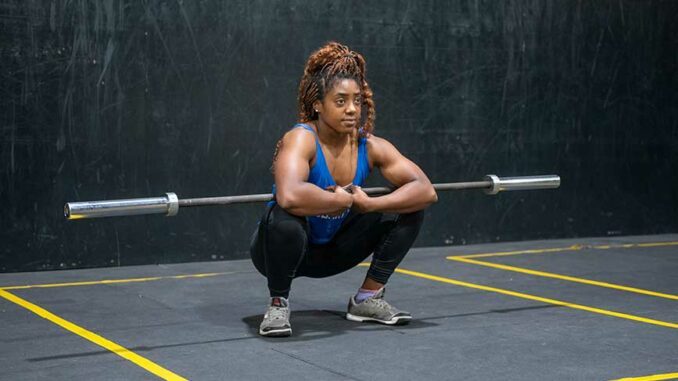
Introduction: Warming up before exercising is a critical yet often overlooked component of a safe and effective workout routine. A proper warm-up prepares your body for the physical demands of exercise by increasing blood flow to the muscles, raising core body temperature, and improving joint mobility and flexibility. In this comprehensive guide, we’ll explore the importance of warming up, the physiological effects it has on the body, techniques for warming up effectively, and best practices to maximize the benefits of your warm-up routine. By prioritizing a thorough warm-up before exercise, you can enhance performance, reduce the risk of injury, and optimize your overall workout experience.
- Understanding the Importance of Warming Up: Warming up is essential for priming your body for the physical demands of exercise and preparing it for optimal performance. A proper warm-up serves several key purposes:
- Increases blood flow: Warming up increases blood flow to the muscles, delivering oxygen and nutrients and removing metabolic waste products, which helps improve muscle function and performance.
- Raises core body temperature: Warming up raises core body temperature, which increases metabolic rate, accelerates enzyme activity, and enhances muscle contractility, leading to improved performance and reduced risk of injury.
- Enhances joint mobility and flexibility: Warming up includes dynamic movements and stretches that help lubricate the joints, improve range of motion, and reduce stiffness, allowing for safer and more effective movement during exercise.
- Activates the nervous system: Warming up activates the central nervous system, priming it for exercise by increasing neural drive to the muscles, improving coordination, and enhancing motor unit recruitment.
- Physiological Effects of Warming Up: Warming up has several physiological effects on the body that contribute to improved performance and reduced risk of injury, including:
- Increased heart rate: Warming up gradually increases heart rate, allowing the cardiovascular system to adapt to the demands of exercise and deliver oxygen-rich blood to the working muscles.
- Vasodilation: Warming up causes blood vessels to dilate, increasing blood flow to the muscles and improving oxygen delivery and nutrient exchange, which enhances muscle function and performance.
- Muscle temperature: Warming up raises muscle temperature, which improves muscle elasticity, reduces muscle stiffness, and enhances muscle contractility, leading to improved performance and reduced risk of injury.
- Synovial fluid production: Warming up stimulates the production of synovial fluid, a lubricating substance found in the joints, which helps reduce friction and improve joint mobility and flexibility during exercise.
- Techniques for Warming Up Effectively: To warm up effectively before exercising, consider incorporating the following techniques into your routine:
- Dynamic stretching: Perform dynamic stretching exercises that target major muscle groups and movement patterns, such as leg swings, arm circles, hip circles, and torso twists. Dynamic stretching helps increase blood flow, improve joint mobility, and prepare the body for movement.
- Cardiovascular exercise: Include light cardiovascular exercise, such as jogging, cycling, or jumping jacks, to gradually increase heart rate, elevate core body temperature, and activate the cardiovascular system.
- Mobility drills: Incorporate mobility drills that focus on specific joints and movement patterns, such as shoulder circles, hip hinges, ankle rolls, and wrist circles, to improve joint mobility and range of motion.
- Sport-specific movements: Perform sport-specific movements or exercises that mimic the movements you’ll be doing during your workout or activity, such as squats, lunges, or arm swings, to prepare the muscles and nervous system for the specific demands of your workout.
- Gradual progression: Start your warm-up with low-intensity exercises and gradually increase intensity and range of motion as your body adapts to the demands of exercise. This allows for a smooth transition into your workout and reduces the risk of injury.
- Best Practices for Warming Up: To maximize the benefits of your warm-up routine, follow these best practices:
- Customize your warm-up: Tailor your warm-up to your specific workout or activity, focusing on the muscles and movements you’ll be using during exercise. Consider the intensity, duration, and type of exercise you’ll be doing and adjust your warm-up accordingly.
- Listen to your body: Pay attention to how your body feels during your warm-up and adjust the intensity or duration of exercises as needed. Warm up at a pace that feels comfortable and allows you to gradually increase heart rate, core body temperature, and joint mobility.
- Stay hydrated: Drink water before, during, and after your warm-up to stay hydrated and support optimal performance and recovery. Dehydration can impair exercise performance and increase the risk of injury, so make sure to drink plenty of fluids throughout your warm-up.
- Incorporate foam rolling: Use a foam roller or massage ball to perform self-myofascial release (SMR) techniques before your warm-up to release muscle tension, improve tissue quality, and enhance mobility. Focus on areas of tightness or discomfort to help alleviate tension and promote relaxation before exercising.
- Be consistent: Make warming up a regular part of your workout routine by incorporating it into every exercise session. Consistency is key to reaping the benefits of warming up, so prioritize warming up before each workout to improve performance and reduce the risk of injury.
- Conclusion: In conclusion, warming up before exercising is a crucial component of a safe and effective workout routine. By increasing blood flow to the muscles, raising core body temperature, improving joint mobility and flexibility, and activating the nervous system, a proper warm-up prepares your body for the physical demands of exercise and enhances performance while reducing the risk of injury. By incorporating dynamic stretching, cardiovascular exercise, mobility drills, and sport-specific movements into your warm-up routine and following best practices for warming up effectively, you can optimize your workout experience and achieve better results in your fitness journey. So prioritize warming up before exercising, listen to your body, and enjoy the countless benefits of a thorough warm-up for improved performance, health, and well-being.